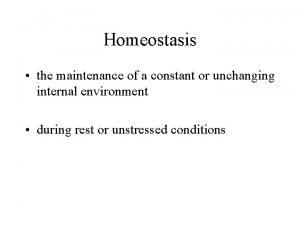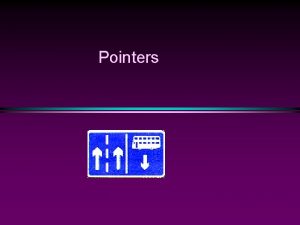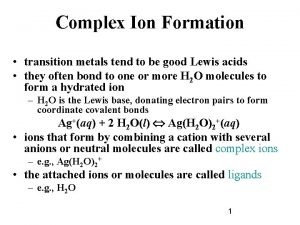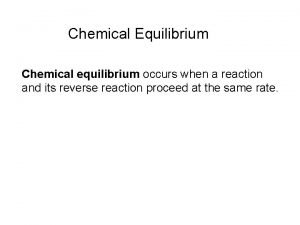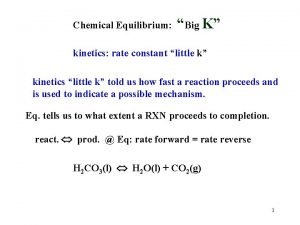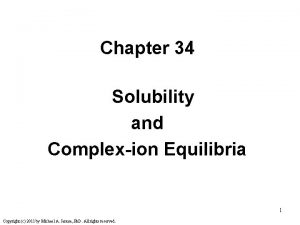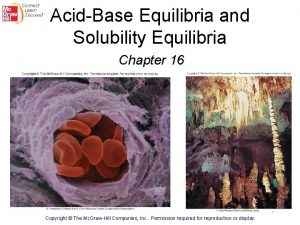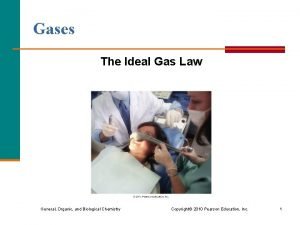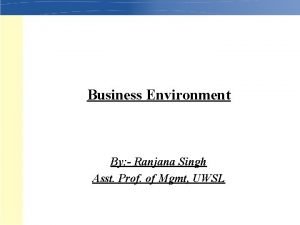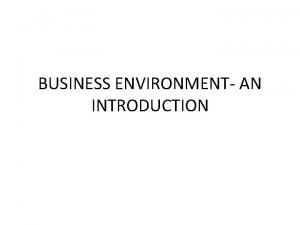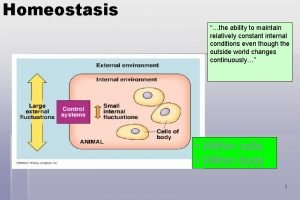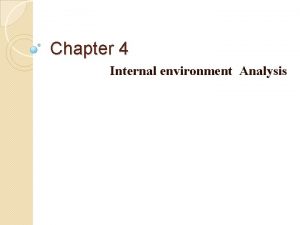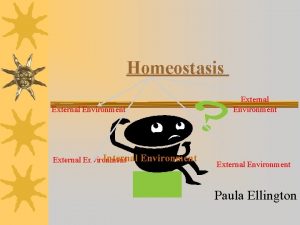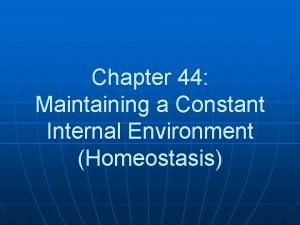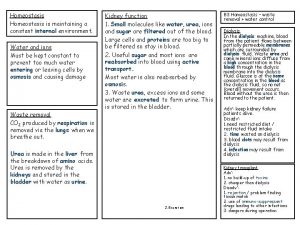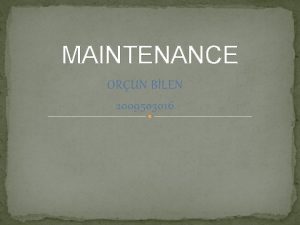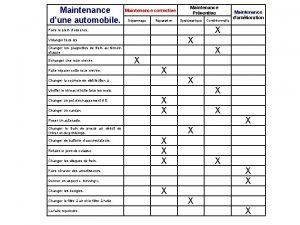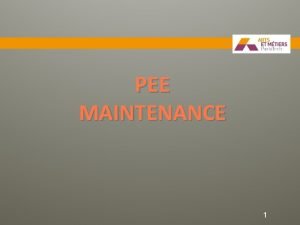The maintenance of a relatively constant internal environment







































- Slides: 39

The maintenance of a relatively constant internal environment in is termed: A. Positive Feedback B. Homeostasis C. Negative Feedback D. Homeopathy E. Osmosis

Which of the following is an organ? A. Mitochondria B. Blood C. Fat D. Skin E. Cardiac Muscle

A collection of cells that work together to perform a function is termed a(n): A. Organelle B. Organ C. Cell D. Tissue E. Prison

Chemistry of Life I. Properties of Atoms II. Chemical Bonds III. Reactions

Why do I have to learn Chemistry? Answer: Physiology is applied chemistry Topics requiring knowledge of chemistry: - metabolism - nerve impulses - blood p. H - protein structure

The Elements of the Human Body • We are mostly Carbon, Hydrogen, Oxygen, Nitrogen • What substance makes up 65% of your mass?

The Elements of the Human Body Carbon Hydrogen Oxygen Nitrogen Why are these particular elements so common?

Planetary Models of an Atom

Review of Atomic Structure • Nucleus – protons: positive charge, mass of 1 unit – neutrons: neutral charge, mass of 1 unit

Review of Atomic Structure • Electrons orbit the nucleus – negative charge, mass negligible

Review of Atomic Structure • Electrons can occur in many shells – Valence electrons are in outermost shell

Review of Atomic Structure • Electrons can occur in many shells – Valence electrons are in outermost shell • form bonds with other atoms • one bond formed for each shared, donated, or received electron

What Determines the Number of Bonds? • The Duet Rule – Hydrogen wants 2 electrons in shell

What Determines the Number of Bonds? • The Duet Rule – Hydrogen wants 2 electrons in shell • The Octet Rule – Atoms want to fill their outer shell – Shells 2 & 3 hold up to 8 electrons

The Formation of Water

Chemistry of Life I. Properties of Atoms II. Chemical Bonds III. Reactions

Chemical Bonds • Covalent bonds • Hydrogen bonds • Ionic bonds

Covalent Bonds • Sharing of valence electrons • Types of covalent bonds 1. Single, double, or triple covalent bond • 2, 4, or 6 electrons are shared

Single Covalent Bond One pair of electrons are shared

Covalent Bonds • • Sharing of valence electrons Types of covalent bonds 2. Nonpolar or polar covalent bond • Share electrons evenly or not

Types of Covalent Bonds • electrons spend equal time around each nucleus • electrons spend more time around one nucleus • Creates a Dipole

Water is formed by polar covalent bonds Dipole is the partial negative charge on the O and the partial positive charge on the H

Covalent Bonds are Really Strong Bond…… Covalent Bond

Chemical Bonds • Covalent bonds • Hydrogen bonds • Ionic bonds

Hydrogen Bonds • Weakest of the bonds • Form because of the dipole • Greatest physiological importance – properties of water – shape of proteins and DNA

Hydrogen Bonding in Water

The Weakness of the Hydrogen Bond

Hydrogen Bonds Create Surface Tension It’s why a belly flop hurts… …and how insects walk on water

Chemical Bonds • Covalent bonds • Hydrogen bonds • Ionic bonds

Ionic Bonds • Attraction of charged atoms (ions) • Weak bonds that are readily broken

Ionization • One atom gives up an electron • Another atom “steals” it • Both atoms satisfy Octet Rule

Ionization • Chloride is now an anion (net negative charge) • Sodium is now a cation (net positive charge)

Hydrogen & ionic bonds are like a Hollywood marriage: Weak Don’t Hassel the Hoff

What’s the big deal with weak bonds? Sodium Chloride Crystals

Salts Dissolve in Water • Ionic bonds are weak and break in water • Hydrogen bonds form between water and ions. • Many H-bonds can overpower ionic bonds

Chemistry of Life I. Properties of Atoms II. Chemical Bonds III. Reactions

Chemical Reactions • A chemical bond is formed or broken • A chemical equation shows: reactants products • Types of Reactions Decomposition: Synthesis: Exchange: AB A + B AB AB + CD AC + BD


Summary • Life is composed mainly of Carbon, Hydrogen, Oxygen, and Nitrogen. Carbon serves as the structural backbone for most biological molecules. • An atom’s reactive properties are determined by its valence. • Atoms can form covalent, hydrogen, or ionic bonds. • Reactants can unite to form larger energy-rich molecules or decompose to form smaller energypoor molecules.
 Maintenance of relatively stable internal environment
Maintenance of relatively stable internal environment Maintenance of a constant internal environment
Maintenance of a constant internal environment Constant pointer and pointer to constant
Constant pointer and pointer to constant Constant pointer and pointer to constant
Constant pointer and pointer to constant 9 pointers
9 pointers Formation constant vs equilibrium constant
Formation constant vs equilibrium constant Rate constant and equilibrium constant
Rate constant and equilibrium constant Big k little k
Big k little k Complex ion equilibria
Complex ion equilibria Constant pointer and pointer to constant
Constant pointer and pointer to constant Constant pointer and pointer to constant
Constant pointer and pointer to constant Formation constant vs equilibrium constant
Formation constant vs equilibrium constant Rate of filtration equation
Rate of filtration equation Gas constant r value
Gas constant r value Environment of business finance
Environment of business finance Internal environment of an organization
Internal environment of an organization Components of internal business environment
Components of internal business environment Objectives of business environment
Objectives of business environment What is business environment
What is business environment Economic environment refers to all forces which have a
Economic environment refers to all forces which have a Internal business environment factors
Internal business environment factors Internal marketing environment
Internal marketing environment External publics of a school
External publics of a school Internal and external business environment
Internal and external business environment Components of internal environment
Components of internal environment Assessing the internal environment of the firm
Assessing the internal environment of the firm Elements of internal control system
Elements of internal control system Right of auditor
Right of auditor Hát kết hợp bộ gõ cơ thể
Hát kết hợp bộ gõ cơ thể Ng-html
Ng-html Bổ thể
Bổ thể Tỉ lệ cơ thể trẻ em
Tỉ lệ cơ thể trẻ em Voi kéo gỗ như thế nào
Voi kéo gỗ như thế nào Chụp phim tư thế worms-breton
Chụp phim tư thế worms-breton Hát lên người ơi alleluia
Hát lên người ơi alleluia Các môn thể thao bắt đầu bằng tiếng nhảy
Các môn thể thao bắt đầu bằng tiếng nhảy Thế nào là hệ số cao nhất
Thế nào là hệ số cao nhất Các châu lục và đại dương trên thế giới
Các châu lục và đại dương trên thế giới Cong thức tính động năng
Cong thức tính động năng Trời xanh đây là của chúng ta thể thơ
Trời xanh đây là của chúng ta thể thơ

